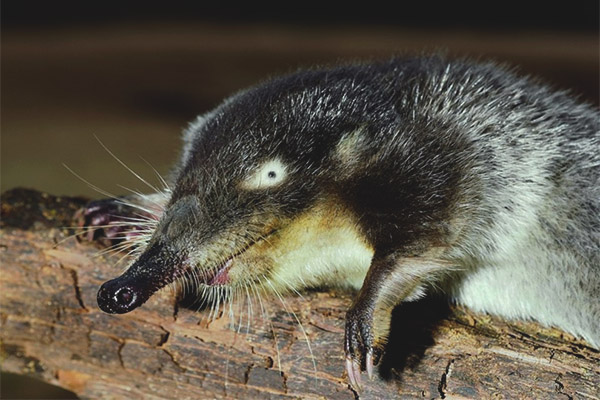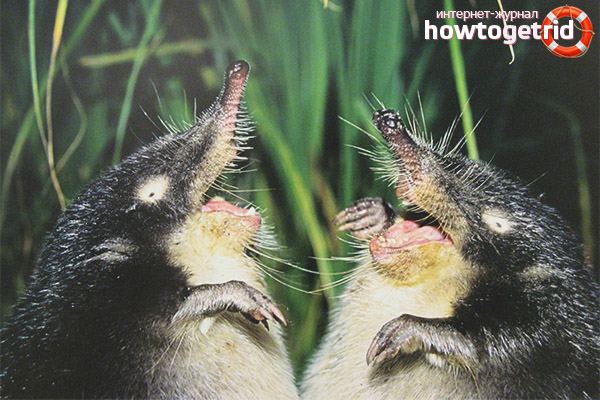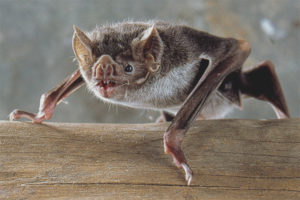The content of the article
In the vastness of our country there is a rather interesting beast, which is called desman. It is listed in the Red Book, and therefore protected by law. It is considered a mammal and insectivorous order. There are many similar varieties, but the presented animal differs from itself in habits and appearance. Today we will analyze everything connected with it, so that everyone can form their own opinion.
Habitat and description
- The discussed species of mammals is common in Russia. Individuals like to dwell in water sources with a weak current, which have a shallow depth. They come ashore, are found in the forest belt. Distribution mainly affects the Dnieper, Don, Ural, Volga. All rivers have the necessary characteristics for a full stay. In large sources, individuals are practically not common.
- With regard to external data, animals have an elongated muzzle, paws with five fingers, membranes and sharp claws, as well as elongated whiskers. The tail is powerful and flattened. External features literally scream that this animal belongs to the semi-aquatic inhabitants. The body is oval in format, the ears are small, the eyes are also small. Wool cover does not pass water due to the presence of a special lubricant.
- Due to the membranes present on the paws, the animal moves quickly in the aquatic environment. Claws are aimed at easing soil tearing. There are special membranes in the ears that protect against moisture penetration. In terms of their overall characteristics, individuals are drawn up to half a meter, no more. Approximately 23 cm. Is given to the tail section. By weight individuals are about 500 grams.
- Fur cover is famous for its interesting structure. In animals, there is an undercoat that is soaked near the skin with oily grease. It does not allow hypothermia and protects from getting wet. The guard hair is hard and durable. The pigmentation is quite different, starting with gray with a silvery sheen, ending with brown (almost black).
- As with all semi-aquatic individuals, these mammals differ in the tail part. This is their pride. The tail is flattened, powerful, compressed from the sides. It is necessary not only as a rudder during movement in the aquatic environment, but also to preserve heat during the cold season. On the tail there are horny particles, in the upper section there is a hard hair. Stink glands are present at the very beginning of the tail.
- Limbs, located behind, are also powerful. They provide the speed of movement, participate in swimming and enhance the action of the tail. The front paws of a shortened format, during movements in the aquatic environment are practically not involved. The muzzle is long in format, the nose is mobile. While under water the animal can be without air for a long time.
- The distinguishing characteristic of mammals of the presented order is their ability to search for food and absorb it directly at the bottom of a water source. This becomes possible due to the presence of a special valve in the nose and a special structure of the oral cavity. The sight of the muskrat is bad, however, this deficiency is compensated by an excellent sense of touch and smell.
Lifestyle
- These animals are distinguished by their diligence. Despite the fact that they spend most of their life in the aquatic environment, they can also live on land. Burrows are built for a long time. There is a basic “room” for sleep, as well as nutrition and the creation of offspring. All moves are marked, and the tunnels are separated by cameras. The animal is organized and practical.
- According to representatives of the family inherent in a single way of existence. However, they may gather in small groups to feel safe during the winter. Moreover, individuals of all ages and sex belong to it. Accommodation is lined with grass, foliage, other knots and even feather.
- Now it makes sense to touch the diet. Individuals can not boast of outstanding overall characteristics, but they eat a lot. The food includes insects, which form the basis of the basic menu. Insects, mollusks, fry, leeches and crustaceans are also used.
- In the spring, these animals have a hard time. When the snow cover begins to melt, the shelter is often flooded.To survive, the family is going on a journey and leaves the warmed place. In the summer season, on the contrary, the desman lacks water. The rivers become shallow, forcing them to run away from home.
The enemies
- It is noteworthy that the individuals under consideration move rather slowly over land. Because of this feature, animals in the wild have quite a lot of natural enemies. Often among them can be identified foxes, ferrets, otters, kites of wild cats and dogs.
- Presented animals are often chosen for land during the mating season. This period falls specifically on the spring flood. At this time, you can clearly hear the various interesting sounds that make females to attract males. The latter, in turn, also chirp beautifully.
- Quite rarely there are clashes between males for the attention of the female. Often, females can produce offspring twice a year. It occurs in spring and autumn. After mating, about 5 babies are born. At this time, the male is always next to the chosen one. Parents together guard and raise offspring.
Breeding
- As for the puberty of the animals discussed, it comes at the age of about 10 months. During the mating season, a kind of play begins. Males begin to fight each other. Females, in turn, make gentle and beautiful sounds. In this way, they show their readiness for mating.
- After mating, the female continues to bear offspring for about 1 month. Then completely helpless and blind babies are born, their weight does not exceed 5 grams. As mentioned earlier, 2 to 5 cubs are born. Literally after 1 month, the offspring can fully eat adult food.
- After a few more months, the cubs are already beginning to lead a completely independent lifestyle. For the year for the female to give offspring twice is quite normal. Peak fertility is most often observed in early summer and winter. In the wild, animals live no more than 4 years. In captivity, individuals live to 5 years.
Population
- In the 19th century, people massively exterminated such animals. This was due to the value of the animal skins and their musky fluids. The latter was actively used in the manufacture of perfumes.The secret of the individuals allowed for a long time to fix the pleasant aroma of perfumes.
- Because of this, the number of represented animals began to decline greatly. In the modern world, it is impossible to count the number of animals. The problem is that animals try to lead a very secretive lifestyle. On land, the represented individuals are extremely rare.
- It is worth noting that scientists were able to approximately count the number of such animals. Worldwide, there are about 30,000. This is not so little, but individuals are protected. At the moment, animals are slowly dying out due to environmental pollution.
- At the same time, water bodies and rivers are being drained. Forests are cut down and dams are built. All this has a negative impact on the animal world. In addition, the presented animals often suffer from fishing nets. To correct the situation, the animal was listed in the Red Book. At the same time, individuals received a status - a rare relict species, which is subject to extinction.
- Currently, there are 4 large reserves and about 80 reserves, in which individuals are under the supervision of specialists. People are trying to restore the number of animals.Also, individuals are under serious protection.
The presented animals are quite interesting and unique. Because of their size and characteristic features, they are virtually defenseless. Animals have a lot of natural enemies. In addition, they suffer greatly from human activity.
Video: Desman (Desmana moschata)













To send